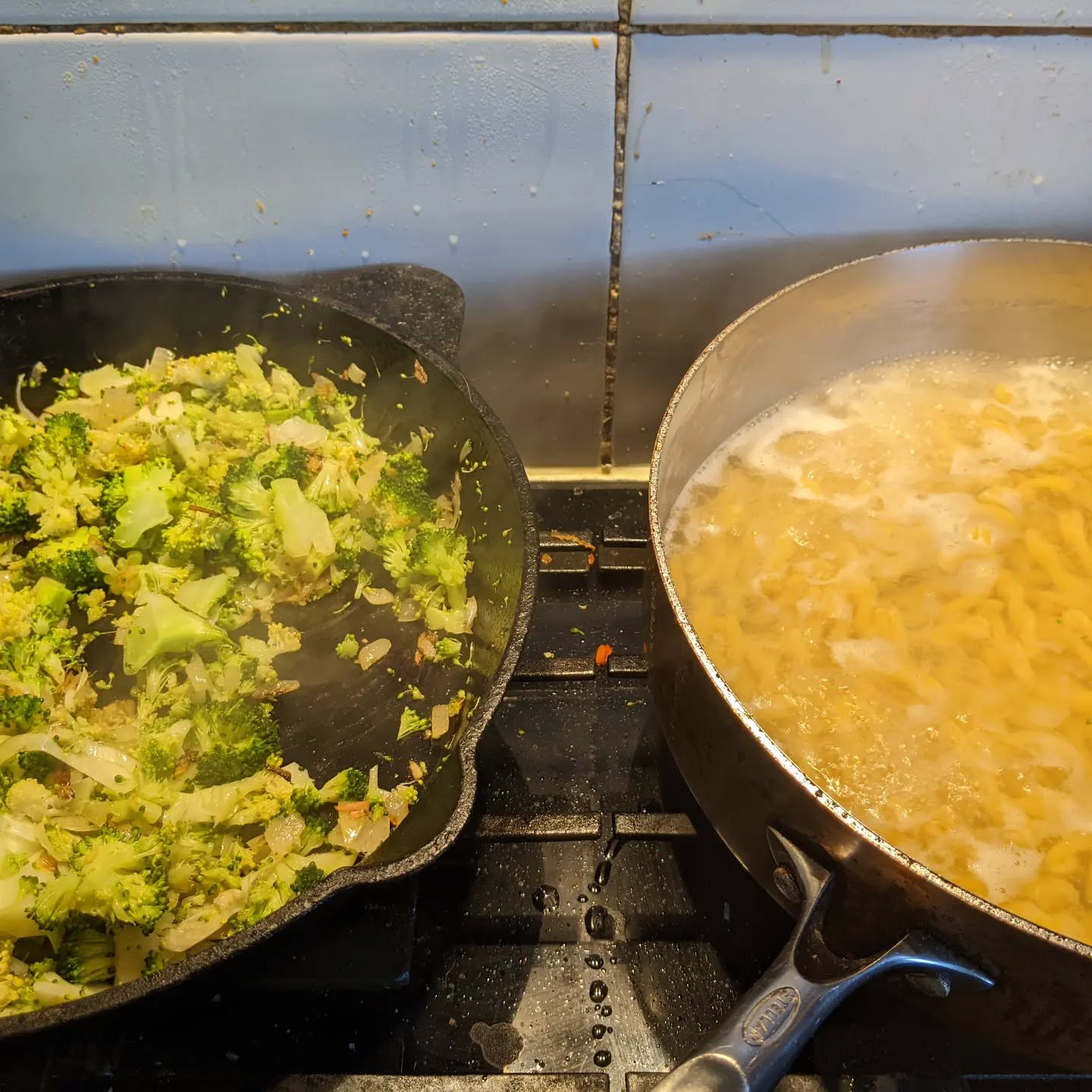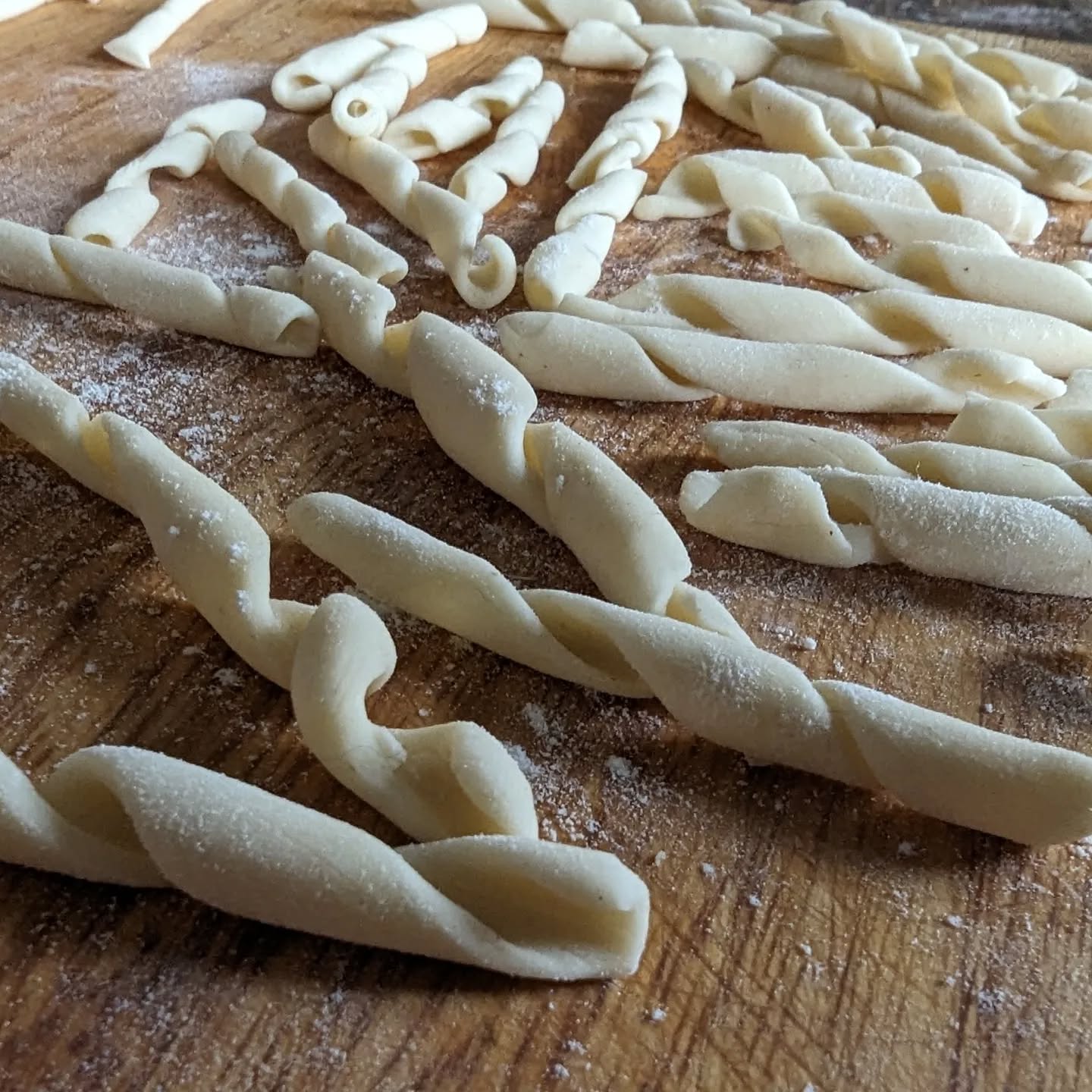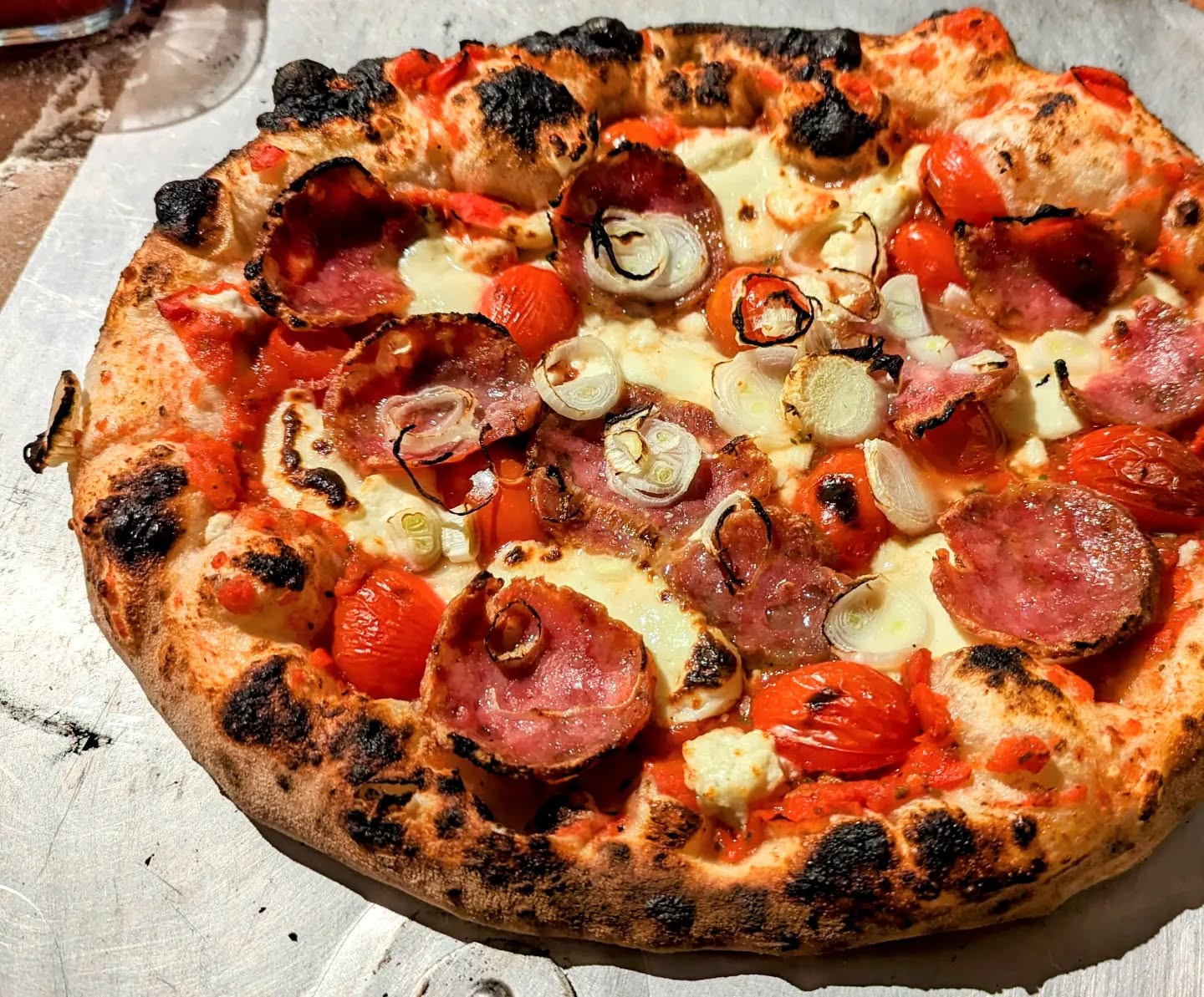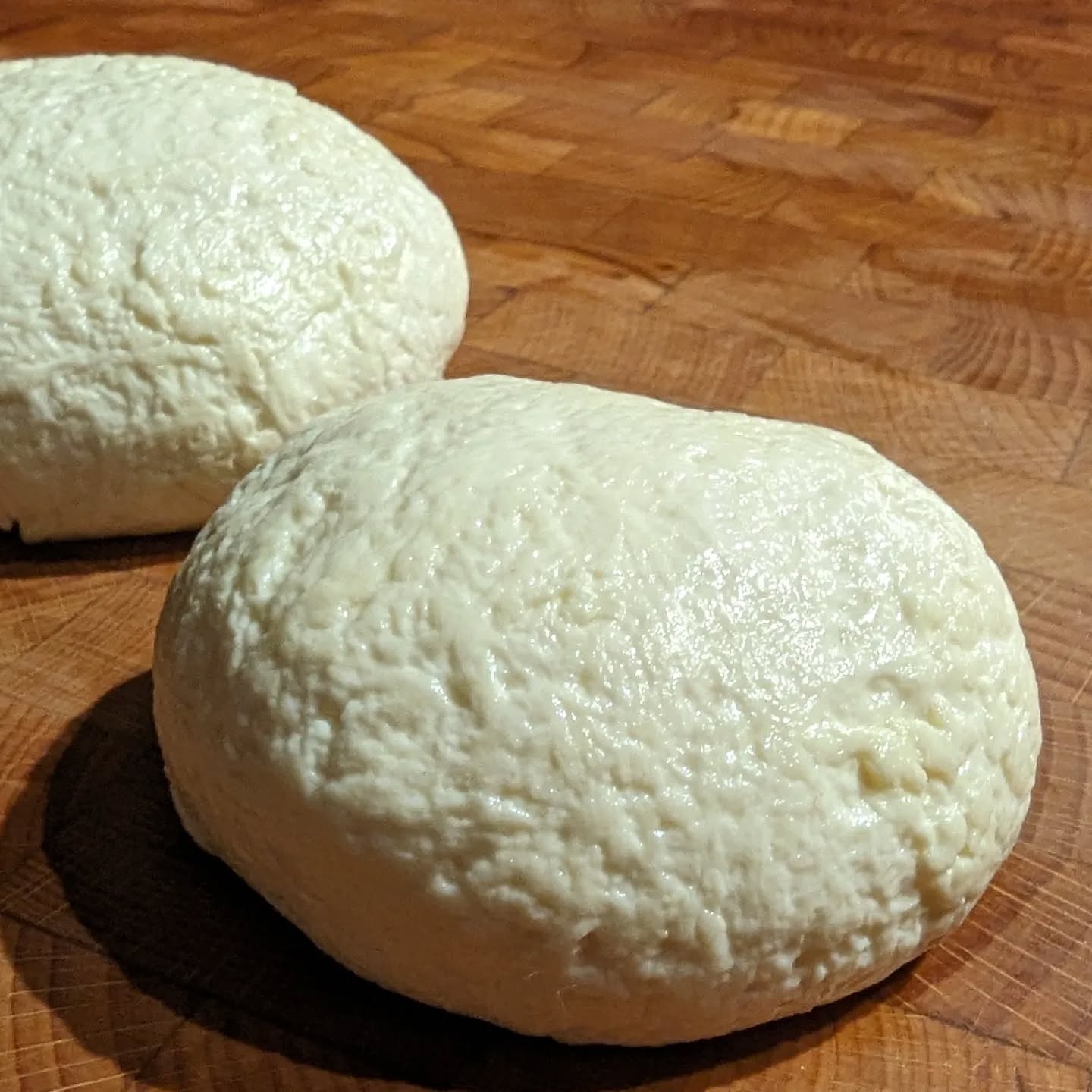· James Torr · Personal · 2 min read

Full volume water pasta method.
Full volume water pasta method. Seen a few one pot pasta dishes around, I personally don’t think they give you that much control over the sauce, so I do them separately. Italians may not appreciate this, as the traditional method is 1 litre of water for 100g of pasta (10:1). I used to use about 5:1, lately I’ve been playing with about 3:1. It works, is much more energy efficient, and helps make starchy water - great for sauces. Just a few changes need making.
Work the sauce around the pasta cook time (which may be a few minutes longer than the bag says).
If you’re using 250g of pasta, boil a litre of water. Add about 3/4 of it (750ml) to a pan on high (I like to use a wide one), and a little under a teaspoon of salt. Put a timer for the pasta and make sure you give a stir or two to stop the pasta sticking. Put a lid on with a few cm of space, and when it is boiling, turn the heat to medium. Make sure there is a gap so the water doesn’t boil over. A few minutes before the pasta timer is up, take the lid off and give it a stir to stop sticking. If it is too thick at this point (milky colour), but a bit more of the water from the kettle in and stir.
When the timer is up, check the pasta. It might need a few more minutes, add some more water if it is getting too thick. You will get a feel for this. When ready, stir the sauce into the pasta (or vice versa). The starches will help to thicken and emulsify the sauce, plus you saved the planet (and your electricity bills).



